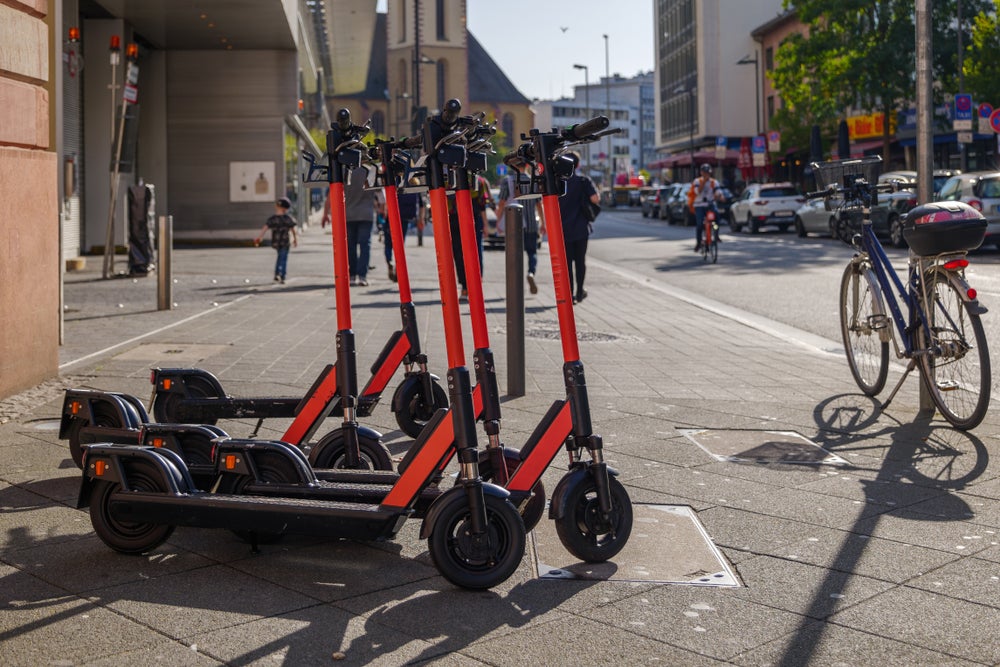
In recent years, there has been a noticeable rise in micro-mobility in many cities worldwide. Should the auto industry be worried? Jonathon Poskitt, director of global sales forecasts at LMC Automotive offers his perspective
In cities around the world the rise of micro-mobility has become increasingly apparent recently, spurred on, as the pandemic deterred the use of shared public transport.
Micro mobility can take the form of bicycles, e-bikes, electric scooters and so on, which may be privately owned or supplied on a rental basis; there has also been a rise in golf cart-type vehicles, which provide a bit of protection from the elements and for storage. With car prices at elevated levels — November 2022 saw an all-time high in average transaction prices in the US — these somewhat more competitively priced options provide an alternative way of tackling people’s transport needs. But does that mean they pose a genuine threat to the car ownership model?
As I look out of the window and see the cold wet winter ahead, the thought of using a golf cart-type vehicle rather than a car does not fill me with enthusiasm. I suspect that the majority of the inhabitants of Europe and the northern states of America would feel the same way. People buy a car because they invariably need it for varying journey lengths, some short and some, occasionally, longer. Having a car and a cart might work for some but there is still an outlay to have the additional cart, its storage, and the safety aspect may be a cause for concern — as the vehicles on the roads around you continue to grow in size, there would surely be an increasing sense of vulnerability. That said, for some southern US states, I’m sure it would work given the climate. Another unresolved issue is where these vehicles are allowed to travel. Can they use cycle lanes/bus lanes and what dangers do they pose to the mobility user or those around them — this uncertainty would deter some from opting for the micro-mobility option, as would any delays to the adoption of related legislation.
There is an argument that micro-mobility could be complementary to a car journey. If, for example, the journey in the car takes you to the outskirts of a city or town where that car is parked and alternative onward travel is sought (maybe because of congestion or that parking in the centre is restricted), the likes of an electric scooter might well be a viable alternative. In that sense, the scooter could then be a competitor to public transport. Again though, the lines are blurred as micro-mobility can also act as a complementary good to public transport as it may connect an otherwise disjointed bus journey, for example. And of course, as the name suggests, micro-mobility is not for longer journeys, so it cannot replace the flexibility of the car for all an individual’s travel needs.
There is also a demographic element to the use of these rising modes of transport, with younger people more open to micro-mobility. Young people tend not to be the target buyer for car companies though (despite the marketing!) as it’s older generations that have the money to buy new vehicles. Added to this, over time, peoples’ preferences may alter as they may move away from city-centre living, start to have families, and so on, where larger, more robust vehicles are required.
How well do you really know your competitors?
Access the most comprehensive Company Profiles on the market, powered by GlobalData. Save hours of research. Gain competitive edge.

Thank you!
Your download email will arrive shortly
Not ready to buy yet? Download a free sample
We are confident about the unique quality of our Company Profiles. However, we want you to make the most beneficial decision for your business, so we offer a free sample that you can download by submitting the below form
By GlobalDataIn emerging markets, the prestige of having a full-size vehicle will win out when income ensures they become affordable (that well-trodden path of car density moving up the S-shaped diffusion curve). And mopeds/e-bikes/push bikes already exist as alternative modes of transport, so in that sense, the disruption is already a part of the market — in China, 30-40 million e-bikes are sold each year and that has not knocked rising car ownership off course, or the market comfortably being the most important in volumes terms globally.
In summary, should the auto industry be worried about the encroachment of micro-mobility? Probably not. That’s not to say that there will be no impact at all; rather, it won’t redefine mobility as we know it, or the need for cars.






